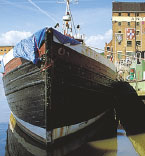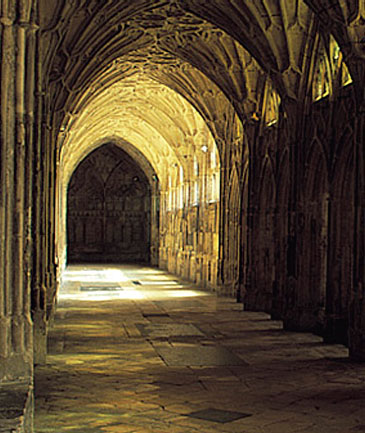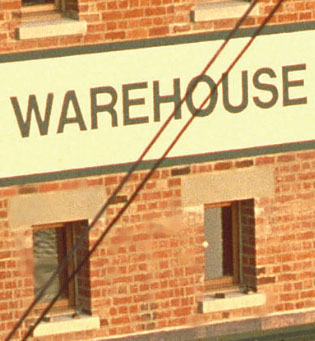
From Roman ruins to the House of the Tailor of Gloucester, the city’s tales pepper English history and beckon visitors today
[caption id="AdayortwotovisitGloucester_Feature" align="aligncenter" width="1024"]

RICHARD KLUNE/CORBIS
YOU CAN SEE FROM AFAR the reason why most people visit Gloucester: the magnificent 225-foot-tall cathedral towering above the city. In August, it’s the focal point for the Three Choirs Festival, but it has been a magnet for centuries. Originally a Benedictine monastery dedicated to St. Peter (1089 to 1540), the abbey was catapulted onto the lucrative medieval pilgrimage circuit when the deposed and murdered King Edward II was buried there in 1327. At the Dissolution, it escaped most of Henry VIII’s plundering and was re-founded as a cathedral in 1541.
[caption id="AdayortwotovisitGloucester_img1" align="aligncenter" width="145"]

GLOUCESTERSHIRE TOURISM/DAVID SELLMAN
With the wealth of successive eras came building and rebuilding, hence the striking combination of architectural styles to admire today. The nave is a superb example of the Romanesque, its emphatic Norman columns planted below Early English rib vaulting added in 1242. Tourists to Edward II’s shrine helped to pay for remodeling that included the south transept, the first full flowering of English Perpendicular, and the choir with its breathtaking 72-foot-by-38-foot stained-glass window representing the hierarchical nature of medieval society. The cloister incorporates the earliest surviving fan vaulting in Britain, designed in the 1360s—it doubled as the corridors of Hogwarts in the Harry Potter movies.
Alongside these major statements, details and curios speak of the past’s vernacular: medieval misericords in the choir stalls, among them an elephant with hooves that betrays a carver’s shaky grasp of the animal world; and graffiti in the cloister where novice monks etched game boards for idle moments. One memorial announces that General William Lyman, a U.S. ambassador, came to take the waters at Gloucester and died in 1811—perhaps it was just as well the city’s spa was short-lived. Another memorial, to John Stafford Smith (1750-1836), is decorated with the Union Jack and the Stars and Stripes, for it was Gloucester-born Smith who composed the tune adopted for the American national anthem.
[caption id="AdayortwotovisitGloucester_img2" align="aligncenter" width="148"]

Step from the cathedral into the surrounding close and there are buildings largely unchanged for 200 years. The charming array includes the Parliament Room, a late 15th-century half-timbered hall at first-floor level set in a 13th-century stone building where Richard II held his parliament in 1378. Maybe you’ll duck under the arch in College Court to The House of the Tailor of Gloucester, recently refurbished and reopened by enthusiastic locals. Beatrix Potter sketched the quaint building in 1897 for her “favourite little book,” though the real-life tailor’s shop occupied 45 Westgate St.
IT’S AT THIS STAGE THAT MANY COACH PARTIES pile back aboard their transport and head off to the nearby Cotswolds. Yet there’s so much more to see beyond the cathedral precincts. Those used to their history laid out on a pretty platter all of a piece, like Georgian Bath to the south or Regency Cheltenham to the east, can find Gloucester a challenge. There’s no single grandiloquent sweep of architectural style because there has been no single heyday, and no economic decline so dramatic that Poverty the Preserver has clung to the character of one era at the expense of subsequent fashions. Instead, you’ve a cheek-by-jowl of today and yesterday: streetscapes that mix black-and-white timber with red brick and stone, the tall, the short and, frankly, the indifferent where modern development has done no favors. But the city has a tremendous heritage and it’s worth seeking out.
Pick up a self-guided walk from the Tourist Information Center on Southgate Street and you’ll find your way to most points of interest. The heart of Gloucester is pedestrianized and compact, with an easy layout that is a legacy of the Romans—the central cross of Eastgate, Westgate, Northgate and Southgate—and Alfred the Great’s daughter, Aethelflaeda, who held sway there at the turn of the 8th-9th century.
Roman Glevum was established in the 1st century AD to guard the lowest crossing point on the River Severn and spy into Wales. It later became one of England’s four coloniae, the highest status for a provincial town. Today little remains on the surface—Gloucester sided with Parliament in the Civil War, famously with-standing a Royalist Siege in 1643, and paid the price at the Restoration by having its Roman walls dismantled. Nevertheless you can gaze on remnants of the East Gate in the Eastgate Viewing Chamber, and visit the City Museum and Art Gallery (Brunswick Road) for Roman mosaic flooring and a fragment of ancient wall preserved in its original state below ground level.
Gloucester’s political, religious and commercial star rose steadily throughout the medieval period. Edward the Confessor initiated the custom of holding Christmas court here, and William the Conqueror commissioned Domesday at his assembly of 1085. In 1155 Henry II granted the city a royal charter, recognizing its equal status with London and Winchester, and in 1216 Henry III was made king there, the only sovereign since the Norman Conquest to be crowned outside London.
Historical cherry-pickings from a city center walkabout take you from 13th-century Blackfriars Priory (Britain’s most complete Dominican friary) and the ruins of 16th-century Greyfriars Friary, to St. Mary de Crypt Church, where evangelist George Whitefield preached his first sermon in 1736 and where pioneer of the Sunday School movement Robert Raikes was buried in 1811. Anglican martyr Bishop Hooper fared less well in Gloucester; under Catholic Queen Mary, in 1555 he was burned to death in St. Mary’s Square beside the cathedral—a charred stump of stake in the eclectic Folk Museum on Westgate Street bears grisly testament.
GETTING GLOUCESTER
ACCOMMODATIONS AND ATTRACTIONS, festivals and events, eating out and nightlife, shopping and comprehensive tourist information: If it’s about Gloucester, you can find it at www.visitgloucester.info. From the latest civic news to current hotel special offers and Three Choir Festival information, this site is genuinely helpful for visitors. As a project for the Gloucester City Council, the visit gloucester Web site proffers a great arsenal of links to other tourism and attraction sites across Gloucester, the county and the Cotswolds.
Gloucester’s location on the River Severn, which first attracted the Romans, in later times brought it commercial prestige as Britain’s most inland port. Just a few minutes’ stroll to the west of the cathedral are the docks. The National Waterways Museum, housed in a former Victorian warehouse that once held up to 5,000 tons of grain, tells the story of Gloucester’s pivotal role transporting coal, cotton, flour and other goods between the bustling seaport of Bristol and the powerhouse of Midlands industry. Business boomed when the 16-mile Gloucester and Berkeley Canal was completed in 1820. The deepest and widest canal of its time, it offered a safer waterway than the River Severn with its huge tidal variation. By the 1920s, though, Gloucester was losing trade to ports such as Avonmouth at Bristol.
[caption id="AdayortwotovisitGloucester_img3" align="aligncenter" width="365"]

GLOUCESTERSHIRE TOURISM/DAVID SELLMAN
The docks are now mainly an area for leisure. In the 1980s, after years of decline, Gloucester woke up to its tourism potential and began the transformation of the 15 Victorian warehouses. The city council moved into North Warehouse, Lock Warehouse became home to 140-plus antiques dealers and the Custom House was converted to the fine Soldiers of Gloucestershire Museum. On a summer’s afternoon, the water-side has a congenial continental air, humming with cafés and shops, and pleasure boats will take you as far as Tewkesbury or Worcester. The revitalization is a welcome catalyst for improvements across the city, with seven development sites earmarked by Gloucester Heritage Urban Regeneration Company for a multimillion pound enhancement.
[caption id="AdayortwotovisitGloucester_img4" align="aligncenter" width="315"]

WWW.BRITAINONVIEW.COM
Meantime, plenty of shops, eateries and some good pubs balance a day or two’s sightseeing. The 15th-century New Inn on Northgate Street was built to accommodate pilgrims visiting the shrine of Edward II, and its galleried courtyard gives a classic old-world experience. With a population of 110,000 or so, a mix of employment, weekly markets and a passionately supported rugby club (the “Cherry and Whites”), Gloucester has the easy-to-manage air of a town rather than a large city that engulfs its visitors. And there’s so much more than the cathedral to investigate.
[caption id="AdayortwotovisitGloucester_img5" align="aligncenter" width="1024"]

MARTIN FOWLER/ALAMY





Comments